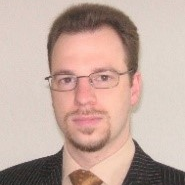Computational Ultrasound Imaging and Applications, 2nd Edition
A special issue of Applied Sciences (ISSN 2076-3417). This special issue belongs to the section "Acoustics and Vibrations".
Deadline for manuscript submissions: 31 July 2024 | Viewed by 1038

Special Issue Editors
Interests: ultrasound imaging; photoacoustics; signal processing; aberration correction; beamforming; machine learning
Special Issues, Collections and Topics in MDPI journals
Interests: ultrasound imaging; photoacoustics; signal processing; aberration correction; beamforming; laser- and ultrasound-based measurement techniques; adaptive wavefront shaping and aberration correcting systems; advanced measurement systems in biology
Special Issues, Collections and Topics in MDPI journals
2. Institute of Applied Physics, Faculty of Natural Sciences, TU Dresden, 01062 Dresden, Germany
Interests: ultrasound imaging; photoacoustics; signal processing; aberration correction; beamforming; laser- and ultrasound-based measurement techniques; adaptive wavefront shaping and aberration correcting systems; advanced measurement systems in biology
Special Issues, Collections and Topics in MDPI journals
Special Issue Information
Dear Colleagues,
The availability of enormous computational resources has spurred the recent transition from fixed-purpose devices to software-defined ultrasound platforms. This paradigm shift enables new signal processing approaches that can vastly improve the performance of an ultrasound imaging system; transitioning the image formation from conventional scanning to computational beamforming allows recording at very high framerates. The localization and tracking of nonlinear scatterers can improve the spatial resolution below the diffraction limit. Adaptive imaging and aberration correction allows one to image through scattering media. Machine-learning-based approaches can solve inverse problems in real time and make novel measurement modalities accessible. These advancements have the potential to open up a broad variety of new applications: medical imaging and diagnostics, such as functional ultrasound, experimental research of complex, turbulent flows and in situ imaging of industrial processes in harsh environments.
This Special Issue addresses the recent trend toward computational ultrasound imaging. It welcomes contributions (original research articles or reviews) from a broad spectrum of fields, which focus on the methods, implementation and applications of computational ultrasound imaging.
Dr. Richard Nauber
Dr. Lars Buettner
Prof. Dr. Jürgen W. Czarske
Guest Editors
Manuscript Submission Information
Manuscripts should be submitted online at www.mdpi.com by registering and logging in to this website. Once you are registered, click here to go to the submission form. Manuscripts can be submitted until the deadline. All submissions that pass pre-check are peer-reviewed. Accepted papers will be published continuously in the journal (as soon as accepted) and will be listed together on the special issue website. Research articles, review articles as well as short communications are invited. For planned papers, a title and short abstract (about 100 words) can be sent to the Editorial Office for announcement on this website.
Submitted manuscripts should not have been published previously, nor be under consideration for publication elsewhere (except conference proceedings papers). All manuscripts are thoroughly refereed through a single-blind peer-review process. A guide for authors and other relevant information for submission of manuscripts is available on the Instructions for Authors page. Applied Sciences is an international peer-reviewed open access semimonthly journal published by MDPI.
Please visit the Instructions for Authors page before submitting a manuscript. The Article Processing Charge (APC) for publication in this open access journal is 2400 CHF (Swiss Francs). Submitted papers should be well formatted and use good English. Authors may use MDPI's English editing service prior to publication or during author revisions.
Keywords
- methods:
- super resolution
- machine learning
- beamforming
- photoacoustics
- elastography
- tomography and solution to the inverse problem
- compressed sensing; coded excitation
- 3D imaging/volumetric reconstruction
- applications:
- medical imaging and diagnostics
- experimental research in liquids or gases; rheology
- monitoring of technical, industrial and biotechnical processes; hydrology
- nondestructive evaluation or testing (NDE/NDT)
Related Special Issue
- Computational Ultrasound Imaging and Applications in Applied Sciences (10 articles)







